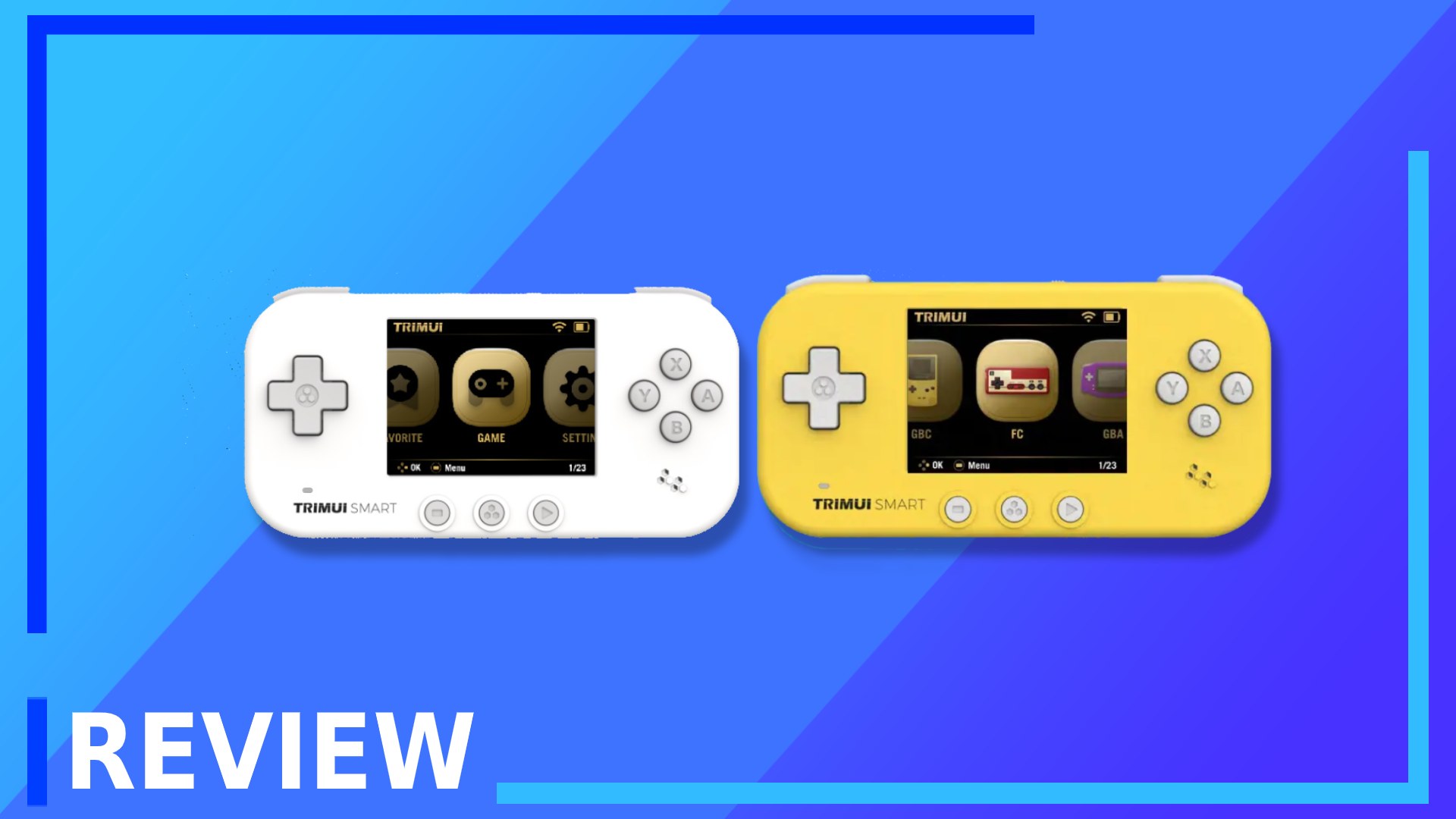Although TRIMUI lacks the name power of the Anbernics and Ayns of this world, there’s still a dedicated fanbase to the company’s previous offering the TRIMUI Model S – a transparent micro-console that makes the Miyoo Mini look like a Steam Deck.
Now, TRIMUI is back with a new console that’s the evolution of the Model S. The TRIMUI Smart is small, won’t break the bank, and is geared towards those looking to play retro games from the ’80s and ’90s.
But is it any good? Should you add it to your collection? Let’s find out.
The Short Version
A fun console capable of emulating retro games from Nintendo, SEGA, Sony, and more that’s a joy to play on. The price, however, may be a little too high for some.
Look and Feel
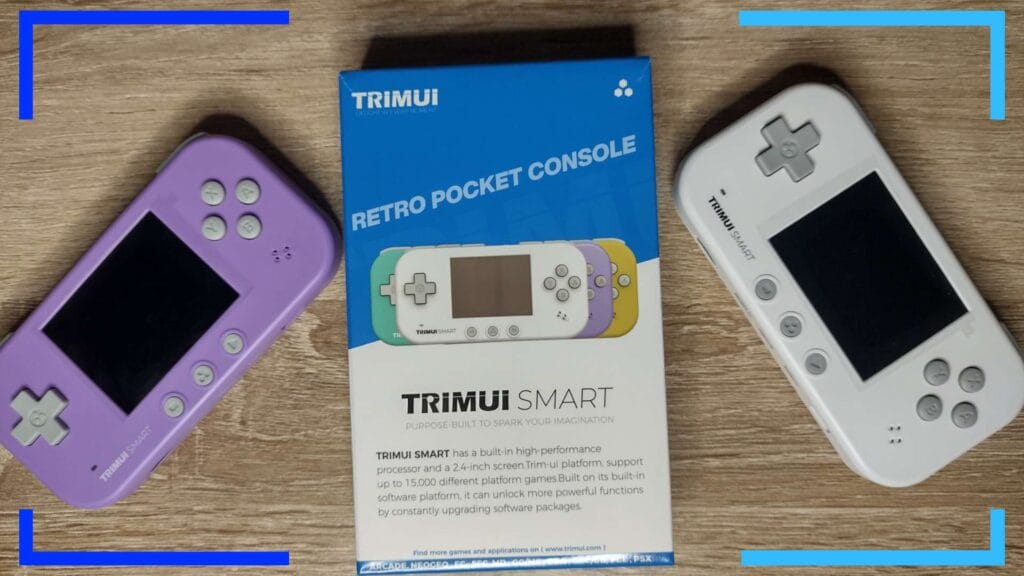
Let’s be real here, the main hook of the TRIMUI Smart is the form factor. This thing is tiny. It’s certainly something you can fit in a pocket that’s for sure.
What impressed me most is despite the smaller size, everything works. The Miyoo Mini is a great console but it’s a novelty that isn’t much fun to play on compared with the Anbernics and AYNs of this world.
The TRIMUI Smart opts for a basic design – four face buttons on the right and a four-way directional pad on the left of the 2.4-inch screen. Along the bottom of the screen are the select, menu, and start buttons, and up top you’ll find the left and right bumpers.
The power button, meanwhile, finds itself to the center-right along the top of the device. Down below is where you’ll find the USB-C charging port and the MicroSD slot.
Given how often some companies cheap out on parts, I’m surprised by how robust the TRIMUI buttons are. The face buttons have a certain heft to them and respond elegantly to presses. The D-Pad has some slight movement in the shell, but again, it’s responsive – you can pull off a Hadouken with ease.
Bumpers have a nice amount of bounce to them, the power button needs a good push meaning it can’t be hit by accident, and the three selection buttons are housed in a circular shell. You won’t be hitting those buttons by mistake.
The rounded shell may not be to everyone’s delight but for me, it fits snuggly when held.
The only major issue with the design is the brightness of the power light in the bottom-left corner. This thing is like a portable sun. I’m fairly sure if you stare at it for too long you’ll need glasses by the end of the week.
There’s also a discussion to be had about audio. The speakers in the TRIMUI Smart are fine, just nothing revolutionary. Loud sounds feel tinny but the mid-range and lower end of the scale sound nice enough.
I feel like I’m going to say this a lot but it’s all about expectations. This isn’t a Steam Deck. For what it is, audio is fine. Plus the main operating system music is a bop.
Emulation Performance
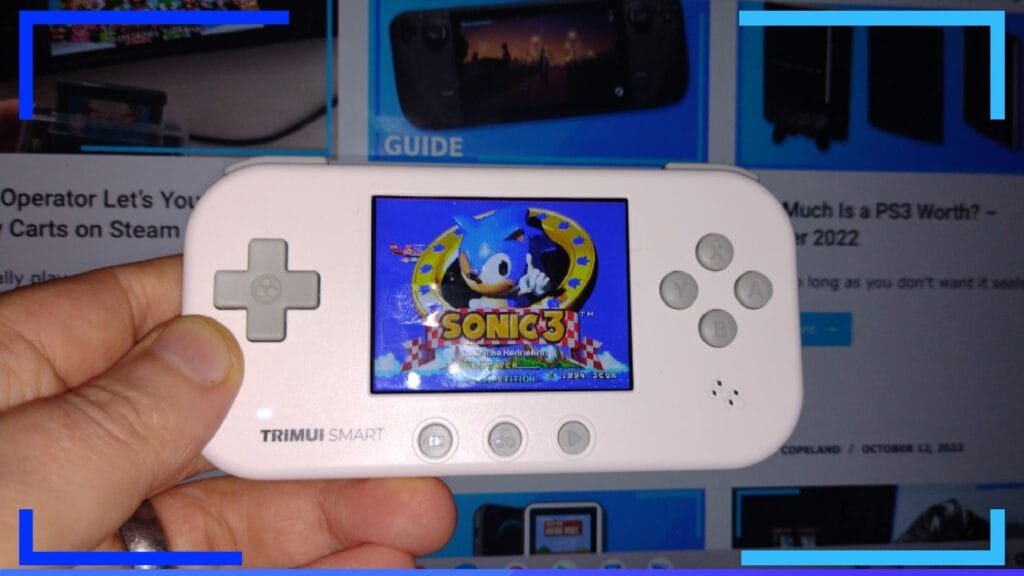
Emulation across the board on the TRIMUI Smart is great. Despite the lack of under-the-hood power, games work with minimal issues.
Where things do struggle most is with PlayStation titles, and that’s one of the few drawbacks of opting for a device with lower-than-average specs.
But it’s not all hopeless. Games like Resident Evil 3 run brilliantly, and any problems titles like that have can be overlooked. It’s when you start looking at more complex and fast-moving games that the issues show up. Bloody Roar struggles to keep the sound from crackling (but is still playable) and Final Fantasy IX can suffer slowdown.
Elsewhere, emulation has its minor kinks. Super Mario World was smooth but certain title screens lacked a background. In a similar vein, Moonwalker on the Genesis is marred by audio crackling and random pops.
Are any of these issues a deal-breaker? Not really. This is a cost-effective system that isn’t trying to be the Steam Deck but smaller. The main takeaway here is that the systems work. Sure, they’ve got a few issues, but there’s nothing game-ruining here. So long as you aren’t expecting perfect emulation on every system, you won’t be disappointed.
- Atari – Good
- CPS – Good
- NES – Good
- Game Boy – Good
- Game Boy Advance – Good
- MAME – Good
- Genesis/Mega Drive – Good
- Master System
- NEOGEO – Good
- NGP – Good
- PC Engine – Good
- PlayStation – Average
- SNES – Good
TRIMUI Smart Specs
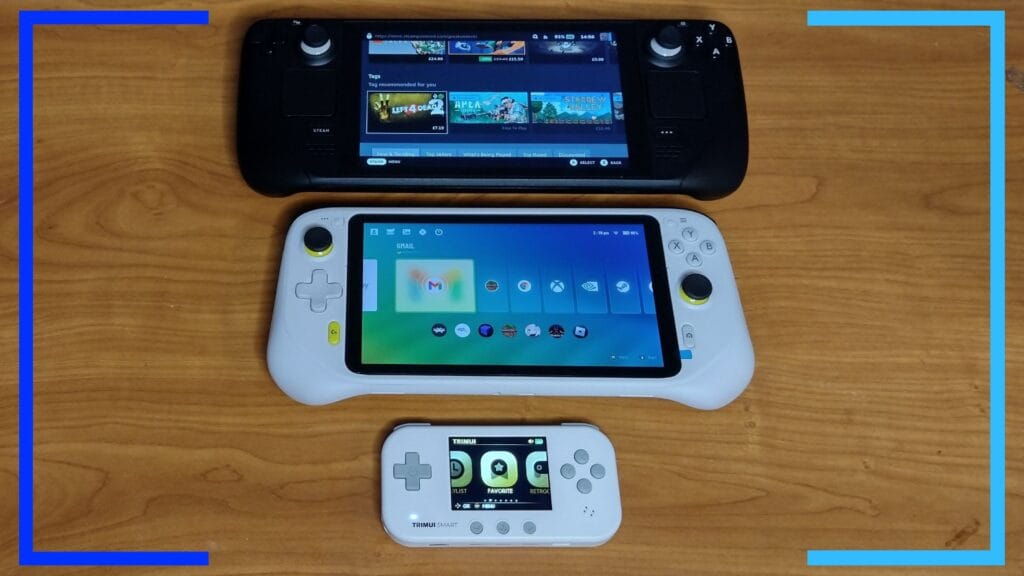
To put the size of this console in perspective, a credit card is 85.6 millimeters long. The TRIMUI Smart comes in at just 25 millimeters longer than that. It’s tiny!
The specs aren’t super powerful, but then they’re also not meant to be. This is an affordable console with a focus on making it as small as possible. While more power is always a good thing, the super-affordable bracket has been losing companies constantly.
Anbenric is aiming for the mid-range and consoles like the Win600 show the company has larger ambitions. Then there are companies like Ayn which hover around the $200 mark. Sure, the Ayn Loki looks great, but with the cheapest offering coming in at $239, that’s hardly affordable is it?
It’s easy to understand why companies would avoid the cheaper price points, but surely the success of the Miyoo Mini proves creating high-quality, low-cost devices is completely possible.
- CPU: Allwinner S3
- RAM: 128MB of LPDDR3
- Screen: 2.4-inch IPS, 240×320
- Operating System: Linux
- Storage: 8GB internal with MicroSD expansion slot
- Connectivity: 2.4Ghz Wi-Fi, Bluetooth 4.0
- Charging: USB-C
- Battery: 1000mAh (around three to five hours per charge)
- Size 110mm by 58mm by 15mm
Operating System
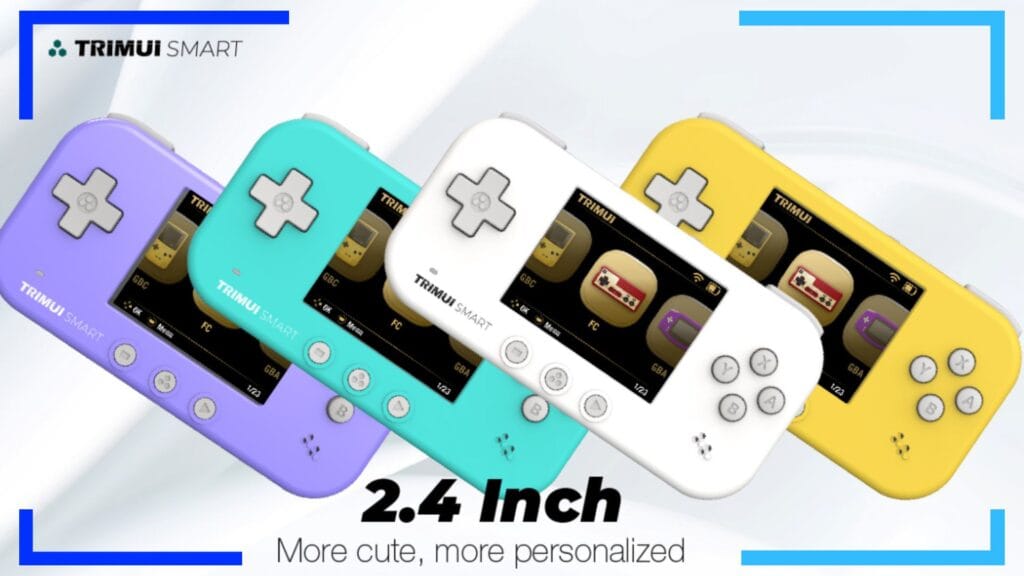
The operating system is surprisingly intuitive. It’s Linux, only downsized to make sense on the 2.4-inch screen. In fact, the operating system is very similar to what we saw in the TRIMUI S.
It’s a scrolling affair – scroll, pick an option, press a button. That sort of thing. It’s nothing especially gripping but that’s fine. On a screen like this, you want everything spelled out for you. It’s the perfect example of less is more.
Also, as I mentioned, the system UI music is banging. Seriously, it’s so catchy.
Where things do get impressive is the use of the menu button as a sort of answer to everything. The console is small, obviously, so hammering in volume sliders and screen brightness buttons would make the overall design feel compacted. No one wants that.
What TRIMUI has done is instead of dedicated buttons for certain functions, you hold the menu button and press something else. For example, pressing the menu button plus either bumper controls the volume level.
It’s a smart way to do things, and while some would prefer dedicated function buttons, those who dig the minimalist theme going on here are sure to prefer this way of doing things.
TRIMUI Smart Cost
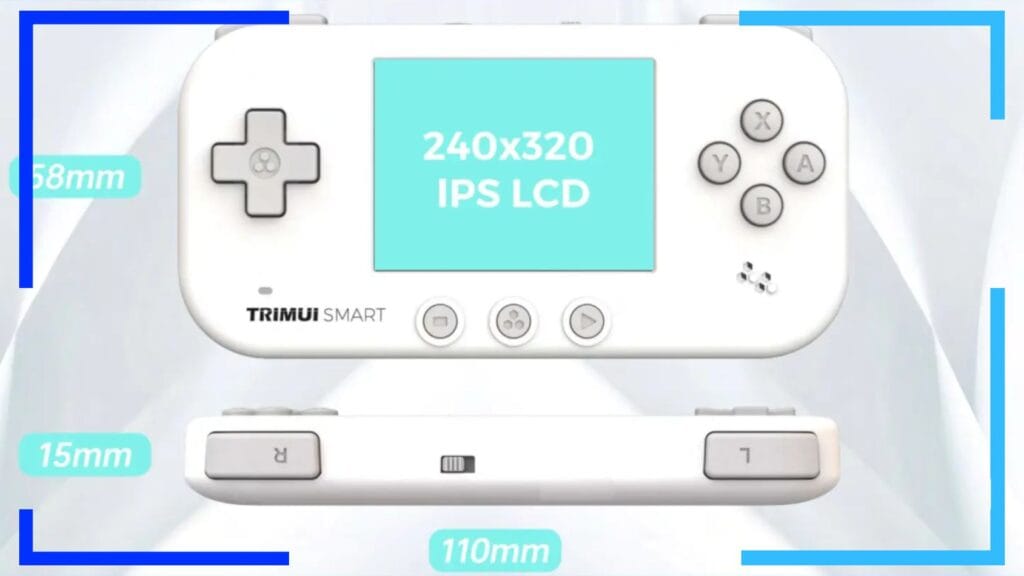
As of right now, the TRIMUI Smart comes in at $99/£62 and is available for purchase on AliExpress. As more units make their way outside of China, we’ll be sure to update this article to reflect the different prices when it hits retail.
Is this a little too high? I think so. At $80 this could be a different story but the closer you get to the $100 mark, the closer you get to paying a bit extra and grabbing something more powerful. With the Retroid Pocket 3 coming in at $110, which can play up to Dreamcast, the smaller form factor may not be enough of a selling point to provide popular with consumers.
How We Tested
We were sent a review unit of the TRIMUI Smart by TRIMUI and spent hours testing the console’s performance and game compatibility across all the systems.
Conclusion
The TRIMUI Smartt is a worthy addition to any retro enthusiast’s collection. It’s not perfect by any means – and emulation isn’t as clean as, say, Anbernic or Retroid devices. But for what it is, emulation is good, and the four hour battery life makes this a console that’s perfect for commutes that won’t take up pocket real estate.
If it’s high-end emulation you’re after, then of course this isn’t for you. Something like the Powkiddy X28, RG505, or RG353V is probably more your thing. But if you’re after something for under a hundred bucks to play the older retro classics on, and you love the smaller form factor, the TRIMUI Smart is a console worth grabbing.

